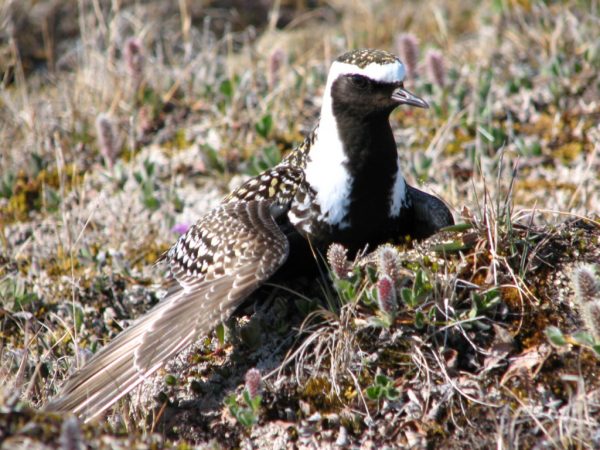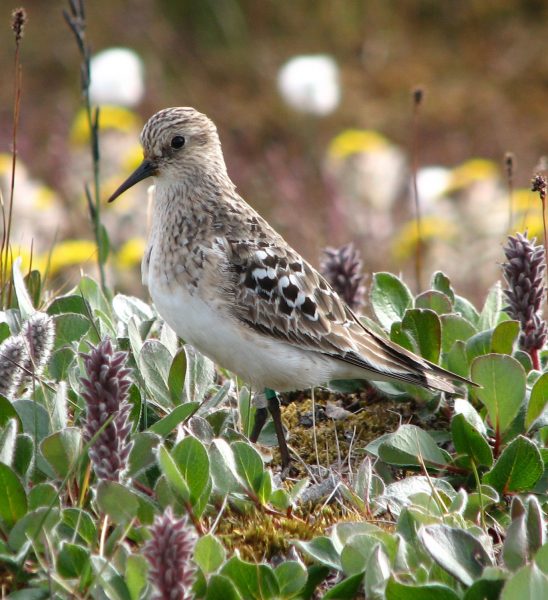TORONTO, November 25, 2016 – Many species of shorebirds are adept at co-parenting by sharing the responsibility of sitting on their nest of eggs, but an international collaboration of researchers, including a professor from York University’s Glendon College, has found that the amount of time each parent sits on the nest may be determined by their method of fending off predators.

American Golden-Plover shorebired. Photo by Laura McKinnon, Glendon College
The birds that use camouflage to defend against predators will have one parent sit on the nest for up to 50 hours before the other one takes a turn. Researchers believe this is to minimize rustling and movement around the nest that may alert predators to its presence.
Birds that defend their nest by aggressively mobbing predators will spell each other off more frequently; sometimes 20 times a day.
“The amount of diversity in incubation behaviour, both within and among species, was truly impressive. Also, revealing that the risk of predation, not the risk of starvation, may drive this diversity, highlights the importance of predation risk in shaping the reproductive ecology of shorebirds,” said York U biology Professor Laura McKinnon.

Baird's Sandpiper shorebird. Photo by Laura McKinnon, Glendon College
The research was led by doctoral student Martin Bulla and Dr. Bart Kempenaers of the Max Planck Institute for Ornithology and involved 76 researchers who studied how shorebird parents divided up their time on the nest and why.
They showed that the parents synchronize incubation duties, which varied widely within and between species. The behaviour did not follow circadian rhythms or light and dark patterns, suggesting the pairs create their own synergy by synchronizing with each other.
The team looked at data from 729 nests of 91 populations of two-parent, incubating shorebirds in a variety of locations. The study was published in the journal Nature.
-30-
York University is known for championing new ways of thinking that drive teaching and research excellence. Our students receive the education they need to create big ideas that make an impact on the world. Meaningful and sometimes unexpected careers result from cross-discipline programming, innovative course design and diverse experiential learning opportunities. York students and graduates push limits, achieve goals and find solutions to the world’s most pressing social challenges, empowered by a strong community that opens minds. York U is an internationally recognized research university – our 11 faculties and 26 research centres have partnerships with 200+ leading universities worldwide. Located in Toronto, York is the third largest university in Canada, with a strong community of 53,000 students, 7,000 faculty and administrative staff, and more than 295,000 alumni. York U's fully bilingual Glendon campus is home to Southern Ontario's Centre of Excellence for French Language and Bilingual Postsecondary Education.
Media Contact:
Sandra McLean, York University Media Relations, 416-736-2100 ext. 22097, sandramc@yorku.ca

